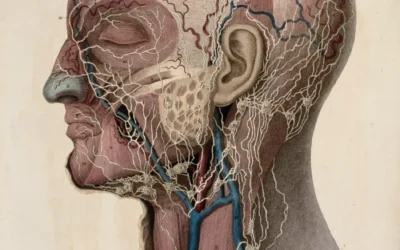What was the Aum Shinrikyo Cult? Cultural Anxieties, Psychological Manipulation, and a Cult's Deadly Legacy Stealing from Other Systems Aum Shinrikyo, like many cults, appropriated and repackaged beliefs and practices from various religions, philosophies, and scientific fields, rather than developing a wholly original worldview. The group cobbled together elements of Buddhism, Hinduism, Christianity and New Age spirituality into an eclectic amalgam used to justify their leader's authority. Aum's central practice...
The Sullivanian Institute: Anatomy of an Urban Psychotherapy Cult
What was the "Sullivans" Psychotherapy Cult? The Sullivanian Institute, a notorious psychotherapy cult that operated in New York City from the 1950s through the 1980s, exemplifies the adage that in cults, nothing good is original and nothing original is good. Many of its core practices and beliefs were repackaged from other psychological models, religious traditions, and scientific theories: The emphasis on interpersonal dynamics in therapy sessions was adapted from the work of psychiatrist Harry Stack Sullivan,...
The Somatic and Neurological Experience of Brainspotting Therapy
The Trauma Healing Power of Brainspotting Brainspotting is a powerful therapeutic approach that engages the body and brain in a unique way to facilitate healing from trauma and emotional distress. Developed by Dr. David Grand, brainspotting evolved out of his work with EMDR (Eye Movement Desensitization and Reprocessing) and taps into the deep connection between the brain's visual system, emotional processing centers, and physiological responses. While the process may vary for each individual, there are some...
How to Pick a Therapy Chair for Your Psychotherapy Office
Why Design Psychology Matters Insights from 12 Mid-Century Modern Masters of Design The field of design psychology examines how the built environment shapes human behavior, emotions and well-being. From the layout of city streets to the furnishings in our homes, the designed world is a powerful yet often invisible influence on our inner lives. Nowhere is this more important than in spaces dedicated to mental health and personal growth, such as therapy offices. The design of the therapeutic environment becomes the...
Nietzsche’s Influence and Counter Transference on Carl Jung
Nietzsche's Influence and Counter Transference on Carl Jung The relationship between Friedrich Nietzsche and Carl Jung was one of profound influence mixed with misunderstanding, fear, and divergence. Jung built upon Nietzsche's pioneering explorations of the hidden depths of the human psyche, yet also harbored deep concerns about following Nietzsche's path. A close examination reveals that Jung was both more indebted to and more conflicted about Nietzsche than he openly acknowledged. One curious episode that...
When Therapy Becomes Metaphysics:
Examining the Philosophical Implications of Psychotherapy Models Psychotherapy, at its core, aims to alleviate mental distress, facilitate personal growth, and enhance well-being. Various therapeutic models, from psychoanalysis to cognitive-behavioral therapy, offer frameworks for understanding the human psyche and fostering positive change. However, when these models are extended beyond their clinical applications and taken to extremes, they can morph into all-encompassing metaphysical and ethical systems. The...
What would a Jungian Ethics Look Like?
What were Carl Jung's Ethics? The Moral Imperative of Individuation At the heart of Jung's approach to ethics is the idea of individuation as a moral imperative. Individuation, the lifelong process of psychological integration and growth, is seen not just as a personal journey but as an ethical undertaking. As Jung's close associate Erich Neumann argues in his seminal work "Depth Psychology and a New Ethic", taking responsibility for one's own psychological development, confronting the shadow, and striving for...
What Does the Garden of Eden Symbolize?
The Symbolism of Eden: Language, Consciousness and the Birth of the Ego The story of the Garden of Eden, found in the opening chapters of Genesis, is one of the most well-known and influential myths in human history. On the surface, it describes the idyllic life of the first humans, their temptation by the serpent to eat the forbidden fruit, and their subsequent exile from paradise as punishment. Yet this simple narrative is laden with profound symbolic meanings that have been pondered by theologians,...
Understanding Alexithymia
What is Alexithymia? Alexithymia is a condition characterized by difficulties identifying and describing one's own emotions. People with alexithymia have trouble recognizing, processing and regulating their feelings. This can lead to challenges in relationships, self-awareness, and overall emotional and mental well-being. Alexithymia is not the same as being a sociopath or psychopath. Rather than an inability to feel empathy, people with alexithymia do experience emotions, sometimes very intensely. However, they...
Marriage Counseling: The Parts we Miss
Understanding the Role of Trauma and Inner Parts When couples embark on the journey of marriage counseling, they often wonder whether the process is truly working for them. While some may experience immediate improvements in their relationship, others may feel stuck or unsure if they are making progress. To determine the effectiveness of marriage counseling, it is crucial to understand the role of trauma and how it affects individuals at different stages of their lives, entrenching certain parts of the self....










